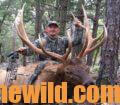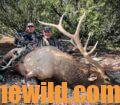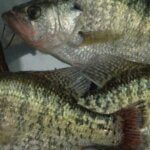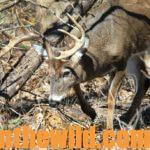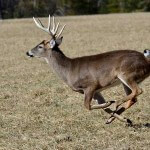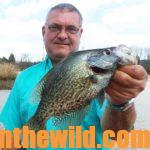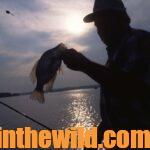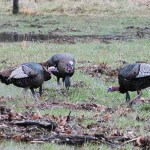Editor’s Note: For the last 20+ years, Ralph Ramos of Las Cruces, New Mexico, has called in a bull for himself or his clients every opening weekend, which is usually Labor Day weekend. Ramos has been hunting mule deer and elk in New Mexico for about 45 years. Archery season for mule deer and elk starts on September 1. All elk and mule-deer tags in New Mexico are assigned through a lottery system. You apply for a tag and then are notified if you’ve been drawn to hunt either of these two species. There are also private-property tags that can be purchased for mule deer. For elk, ranchers get authorization, and then you can buy a tag from the ranchers.
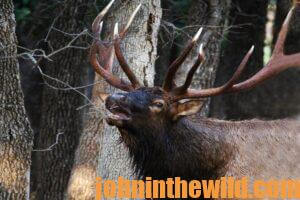 I had a great hunt with a friend of mine, Jay Jarden, who’s also from Las Cruces, that we took on opening weekend of 2020. We both shoot PSE Bows (https://psearchery.com/) – carbon bows and the latest EVO models. We both shoot about 70 pounds and use fixed broadheads.
I had a great hunt with a friend of mine, Jay Jarden, who’s also from Las Cruces, that we took on opening weekend of 2020. We both shoot PSE Bows (https://psearchery.com/) – carbon bows and the latest EVO models. We both shoot about 70 pounds and use fixed broadheads.
As soon as we got out of the truck on this hunt, our plan was to walk down this long ridge. I planned to work a series of different calls made by various manufacturers to try to get an elk to bugle. I use Rocky Mountain Elk Calls (https://buglingbull.com/product-category/elk-calls/), Will Primos Calls (https://www.primos.com/hunting-calls/elk-calls/) and Wayne Carlton Calls (https://www.nativebycarlton.com/collections). I believe using calls from different manufacturers is one of the reasons I have such good success calling in bulls. Each manufacturer I’ve mentioned makes great elk calls, but they all sound different. I want to sound like different bulls or cows every time I blow a call. Each individual cow sounds different when she calls, as does each bull. Some elk call with high-pitched tones, while others call with low-pitched tones. Some bulls sound more like they’re squealing when they bugle, and other bulls sound like they’re growling. So, I believe you need an assortment of calls when you’re trying to work a bull into bow range.
Every time I guide hunters, we usually average taking a bull out of every two days we hunt. I only hunt public lands, in the Lincoln National Forest (https://www.fs.usda.gov/lincoln). On this particular hunt, I went to this long ridge that I’d hunted during early season for many years and called in bulls there every season. You could walk a long way along this ridge, and we usually could get a bull to bugle on this ridge during opening weekend.
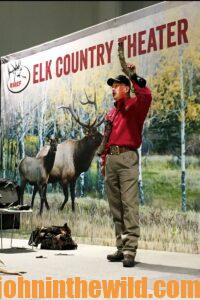
I’ve developed a technique I call the X-on. Once we hear an elk bugle, I sit my hunter in a spot where I think the elk will come to, then I get about 75-100 yards behind my archer, but within sight of him and start calling to the bulls. If the bull sounds like he’ll come in to the right of the hunter, I’ll move to the hunter’s left to call, so the bull will walk in front of the hunter. If he sounds like he’s going to the left of the hunter, I’ll move to the right.
When we heard the bull bugle on mine and Jay’s hunt at the beginning of elk season, 2020, the bull bugled across the canyon, about 400 yards from us. Because I’d hunted this area so much, I knew that the ridge we were on would meet the ridge the elk was on where the two ridges came together and made a bowl on the north end of the ridge. With a lot of timber there, the area was very shady and therefore cooler than either ridge. That was where the bulls usually went to bed. I also knew that the trail that the bull was on was the path of least resistance to reach the bowl. So, we hurried back to the bowl to get there ahead of the bull. The bull was bugling often to the cow calls I was giving as we were walking. I used a cow call that sounded like the cow that was leading the herd and gave various cow calls and calf calls, as I moved to the point where I thought that the bull would come.
When we got close to the back end of the shaded bowl, the bull elk stopped bugling. I bugled to him to make the bull think another bull was traveling with the herd of cows I’d sounded like. However, I didn’t give him a full bugle – but more of a moaning bugle that sounded like a growl and a chuckle. Then I followed that bugle with many different cow calls. As soon as the bull heard me moaning and chuckling on the bugle, he bugled back. I could tell he was on the way to us. We finally saw him coming from about 150-yards away. Jay and I both were wearing Mossy Oak camouflage (https://www.mossyoak.com/). I had Jay set-up in front of a big tree with a clear view in the direction from where the elk was coming.
I think seeing a hunter in camouflage doesn’t spook an elk, however seeing a hunter in camo move will spook an elk. That’s why I also believe in the HECS suits (https://hecshunting.hecsllc.com/hunting-seasons/elk/) and wear them. The elk don’t seem to pick up on the vibrations that a hunter gives off when the hunter’s wearing HECS with their sixth sense that they often use to know there’s danger nearby.
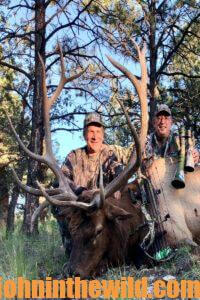
Jay already had nocked an arrow and was getting ready to take the shot before he actually saw the elk coming. The bull got closer and closer to the 30-yard range that Jay had picked out for shooting. I like for my hunter to decide when he wants to draw a bow, when the elk is 20-40 yards from him. As soon as that bull got his head behind some tree or brush where he couldn’t see Jay move, Jay came to full draw.
Once the elk was at 40 yards, I quit calling. Jay was at full draw, and the bull was coming at a fast trot, head-on, to Jay. As a seasoned elk hunter, Jay didn’t look at the elk’s antlers anymore but rather concentrated on the spot where he wanted to put his arrow. You want to imagine a line going from the bull elk’s brisket toward his rear and a line that comes straight up from the elk’s shoulder intersecting that line from the elk’s brisket, about one-third of the way up from the elk’s belly. When the bull was at 18 yards, Jay had a cow call in his mouth and gave the bull a soft cow call before releasing his arrow. But Jay had gotten excited, and his arrow hit the bull a little bit behind the crease and somewhat high.
One of the advantages I have when I’m guiding someone is that I take a video camera with me to video the hunt and also to replay the video after the elk has been arrowed and see exactly where the broadhead’s hit. Then we know how long we should wait before we try to go recover the elk. I always want to wait at least 5 hours before I attempt to recover any elk that’s arrowed.
Jay’s bull went about 300 yards, and we saw him lay down. We backed out, waited a little while, snuck back in and saw that he still had his head up. So, we backed out again, we went to the truck, and we waited until 2:00 pm because Jay shot the bull at 9:00 am. Then we went back to the bull and saw that he’d expired. The bull was a good 6×6 that scored about 330 inches on Pope & Young (P&Y).
To learn more about hunting elk successfully, check out John E. Phillips’ new 2021 book, “Elk: Keys to 23 More Hunters’ Success,” available in a Kindle, print and Audible versions at https://www.amazon.com/gp/product/B09B2H9V6Y/ref=dbs_a_def_rwt_hsch_vapi_taft_p5_i2.
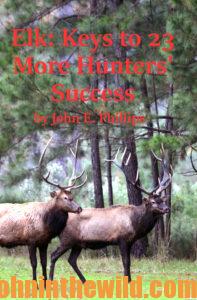 Also, see John’s book, “Bowhunting Deer: The Secrets of the PSE Pros,” and its Chapters 12 & 13 on Coues deer, available in Kindle and print at (http://amzn.to/VBr1qW), and soon to be available in mid-October in Audible. You may have to copy and paste these clicks into your browser. When you click on this book, notice on the left where Amazon allows you to read 10% of the book for free. On the right side of the page and below the offer for a free Audible trial, you can click on Buy the Audible with one click.
Also, see John’s book, “Bowhunting Deer: The Secrets of the PSE Pros,” and its Chapters 12 & 13 on Coues deer, available in Kindle and print at (http://amzn.to/VBr1qW), and soon to be available in mid-October in Audible. You may have to copy and paste these clicks into your browser. When you click on this book, notice on the left where Amazon allows you to read 10% of the book for free. On the right side of the page and below the offer for a free Audible trial, you can click on Buy the Audible with one click.
Tomorrow: Realize That Heat Impacts Elk Hunting

